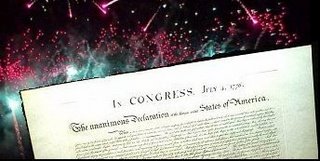 One of the most fascinating things about bookselling can be the odd items you find in books, and the stories they can lead you to unearth once you begin hunting around. A case in point is a copy of Stanley Casson's 1928 study "Some Modern Sculptors" which we bought a few years ago. It's a great book, but neither scarce nor expensive.
One of the most fascinating things about bookselling can be the odd items you find in books, and the stories they can lead you to unearth once you begin hunting around. A case in point is a copy of Stanley Casson's 1928 study "Some Modern Sculptors" which we bought a few years ago. It's a great book, but neither scarce nor expensive.However, when we examined our copy we found that it had once been owned by Francis Henry Taylor, a Director of the Metropolitan Museum of Art, and had three typewritten letters from Casson to Taylor tucked inside the rear endpapers!
Well, that seemed interesting, so we started doing some further research...
Stanley Casson (1889-1944) was a multi-talented art scholar and army officer who read Classical Archaeology at Oxford, served as Assistant Director of the British School at Athens, Special Lecturer in Art at Bristol University, and was Director of British Academy Excavations at Constantinople in 1928-1929. His publications include numerous articles and books on the subject of Classical Antiquities.
He also had two distinguished war records, starting the First World War as an officer with an infantry regiment in the trenches of Flanders before becoming part of the British Salonika Force in 1916 and finally serving on the General Staff in 1918. His war poems, written in the Flanders mud, are now part of the War Poetry Collection at Napier University in Edinburgh.
Starting in 1939 he again served the British government in Holland, and later transferred to Greece where he was serving as a liaison officer when he was killed in an airplane crash in 1944.
Now, what about Francis Henry Taylor? Taylor (1903-1957), was a former Curator of Medieval Art at the Philadelphia Museum of Art, Director of the Worcester Art Museum at about the time the letters we found were written, and eventually became Director of the Metropolitan Museum of Art.
The three typewritten letters were written to Taylor by Casson, on New College, Oxford letterheads, from the early 1930s. The first letter simply greets him and extends Casson's admiration for an article that Taylor wrote on Greek sculpture; the other two were evidently written after Taylor had taken a trip to London and the two had become friends.
A few excerpts give a general idea of the scholarly goings on:
[Aug 7th] "I enjoyed that evening in London more than I have enjoyed anything in this country for a very long time. My only sorrow is that I cannot give the return party to you here... How precisely I got home after you had decanted me from the taxi I cannot say. By strange luck I got into the right train and there remained semi-comatose until Oxford. Again Heaven aided and there was actually a taxi at the station... Meantime I suggest a good line of research would be to find out if Miss [R] keeps a stature of Hermes in her bedroom... By the way, Wilenski has just written a crazy book on "Modern Sculpture" that I find would serve as an admirable whipping post for discussing the ultra-modern coprolite-sculptors... Eric Gill, whom I saw on Sunday after our carouse, is commissioned to do some 150 full size figures on a new cathedral at Guildford in Surrey. He is getting together a band and going to do it in the real mediaeval manner (I mean as regards the organisation)."
[Nov 2, 1932] "As to the statue, actually I see no reason to doubt it and it really is a scoop... but there will be Hells own row in Greece and someone will get the permanent push in Athens. I cant imagine how on earth they get such things out without being spotted. ... Meantime if in due course I can come over your way, as you suggest, I feel little doubt that I shall see U.S.A. a bit more from the right viewpoint than most of the many academics that sour the atmosphere of your genial land. Gawd, what stiffs we do send you sometimes!".
I love this stuff. Sometimes it's true- you can't judge a book by its covers!

